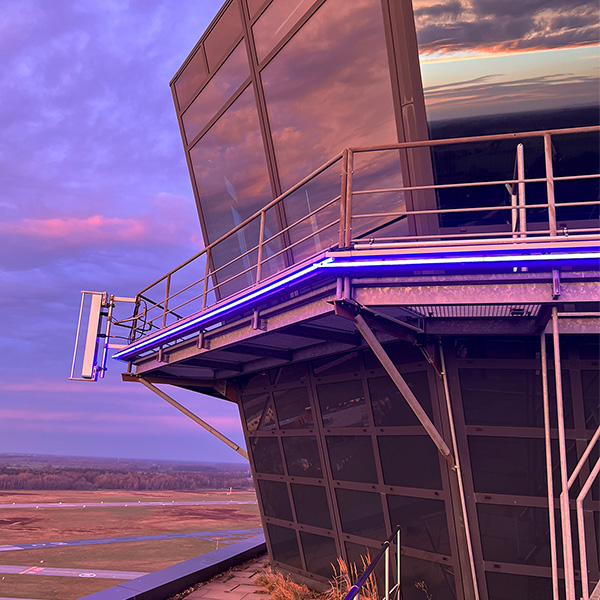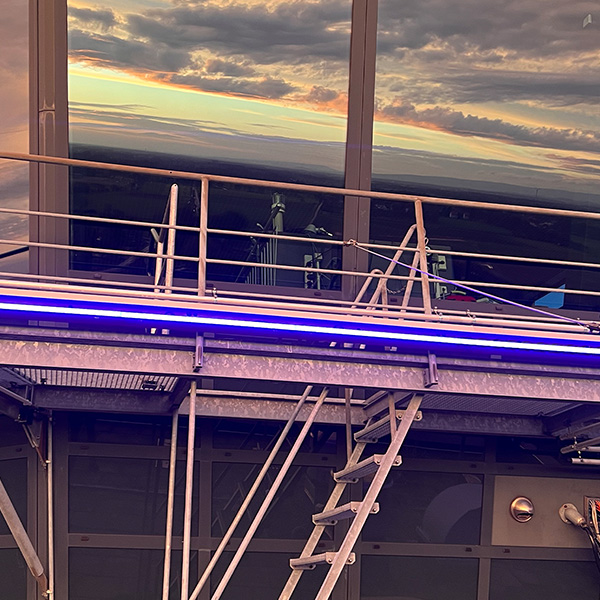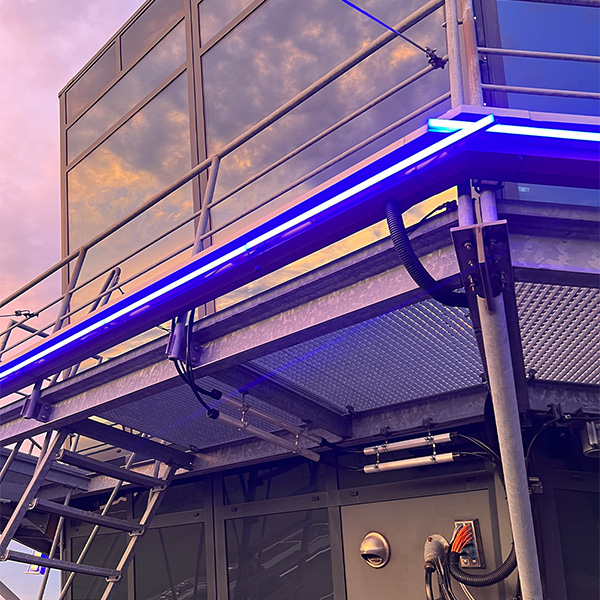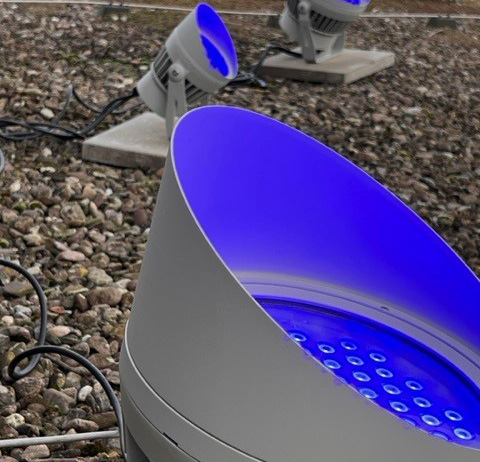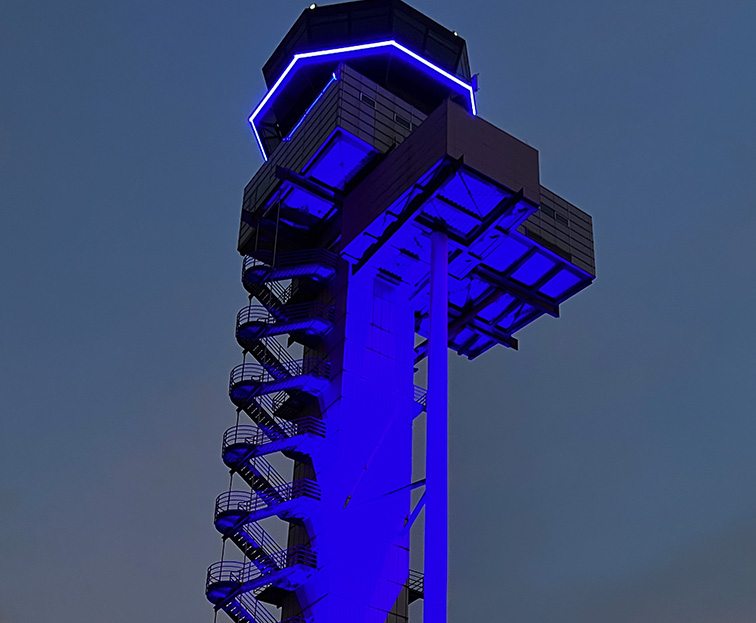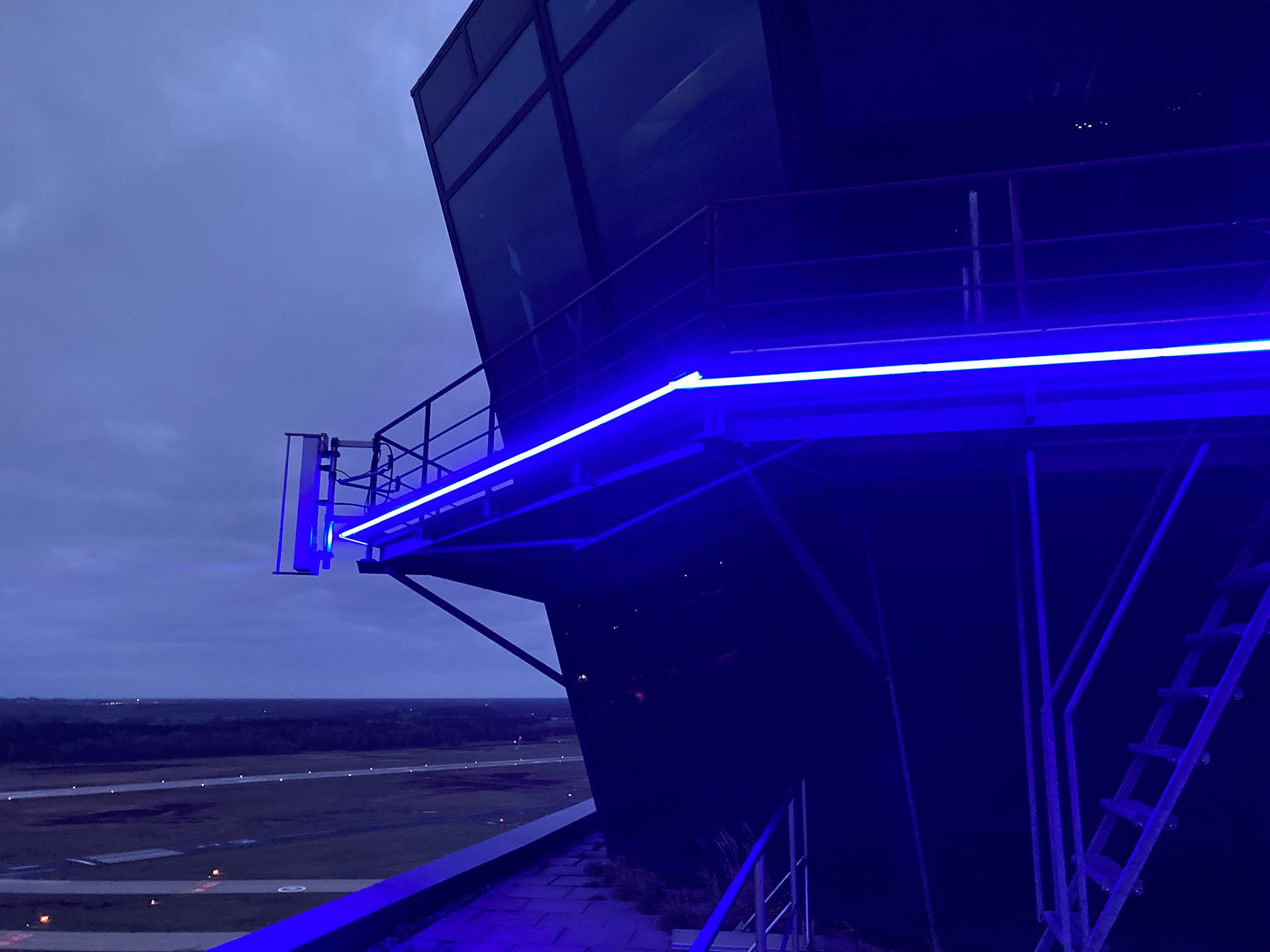A Sense Of Arrival
Hannover Airport Control Tower
Hannover, Germany
The control tower of any airport is inevitably a landmark as it will always be the tallest structure in what must necessarily be a very low-rise environment.
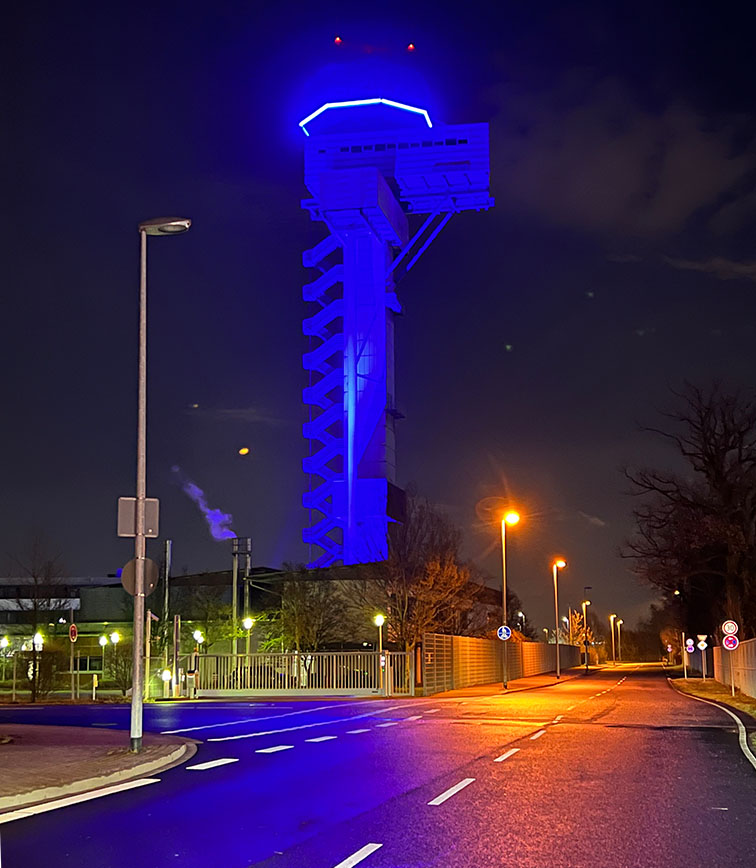
The control tower will always have an interrupted 360 degree view of the runways and the apron. Conversely and for the same reasons, the tower itself is an interesting object visible from afar and close.
Therein lay the opportunity to make a feature of it at night. The air navigation service provider in Germany is DFS (Deutsche Flugsicherung GmbH).
DFS manage all air traffic movements in the airspace under their control, firstly from radar control centers distributed throughout the country, and secondly by the air traffic controllers in the airport control towers.
They manage what happens on the apron, on the runways and in the surrounding airspace. These tower controllers ensure the smooth conduct of traffic at the aerodrome. They coordinate the aircraft which are taxing, taking off and landing by radiotelephony. They inform pilots about the departure procedures and issue take-off clearances. Tower controllers always have direct visual contact with the aircraft. At night and in conditions of low visibility, such as fog, they are supported by ground radar.
DFS operates all buildings and facilities required for these tasks under its own responsibility. DFS took the decision to illuminate the Hannover control tower as a statement providing a sense of arrival for passengers and an opportunity to create some corporate branding by using blue light which is the company colour of DFS.
In Hannover, the very distinctive tower should always be illuminated in the company colour; blue.
Our Brief
Our brief was to design, manufacture and install a custom lighting system that would enhance the architectural form of the tower as economically as possible, not only from a cost perspective but also the use of energy. The lighting system would be operated in blue only.
An airport tower must meet the highest safety requirements in every aspect. At no time, either during installation or operation of the lighting system, must safety be compromised. The air traffic controllers must not be impaired in the performance of their duties at any time, and under no circumstances must they be dazzled.
OUR SOLUTION
We know that the building structure would be difficult to illuminate, even more so when you are limited in the number of luminaires to be used. A detailed site inspection was conducted by Illumination Physics’ Europe Manager Martin Opolka.
The conclusions were obvious – there were two key components for the illumination of this structure. Custom light fixtures using only blue LEDs would be built for maximum performance and efficiency.
1. The vertical
The height of the tower must be illuminated and the most efficient way to achieve this was to use a cluster of upward pointed wash lights with very narrow optics and glare shields to prevent the unwanted spill of light. In order to accurately illuminate the vertical structure, three of Illumination Physics IP Circular Wash Light series luminaires would be required; each aimed at a third of the height of the tower.
The mono colour LED version would give the most precise results.
One unit of IP Circular Wash Mono 72 watts with 28 Blue LEDs and a 10 degree beam would illuminate the lowest first third of the tower.
One unit of IP Circular Wash Mono 140 watts with 72 LEDs and a 10-degree beam would illuminate the lowest second third of the tower.
One unit of IP Circular Wash Mono 140 watts with 72 LEDs and a 10-degree beam would illuminate the lowest final third of the tower.
The intensity of the overlapping focus would be adjusted by dimming the three fixtures to achieve an even result.
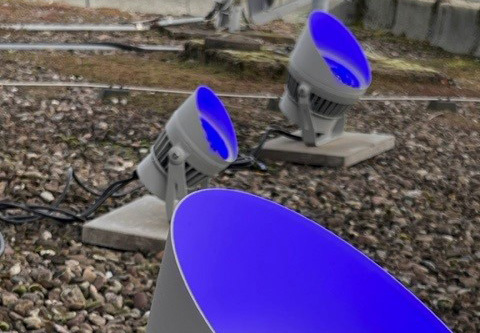
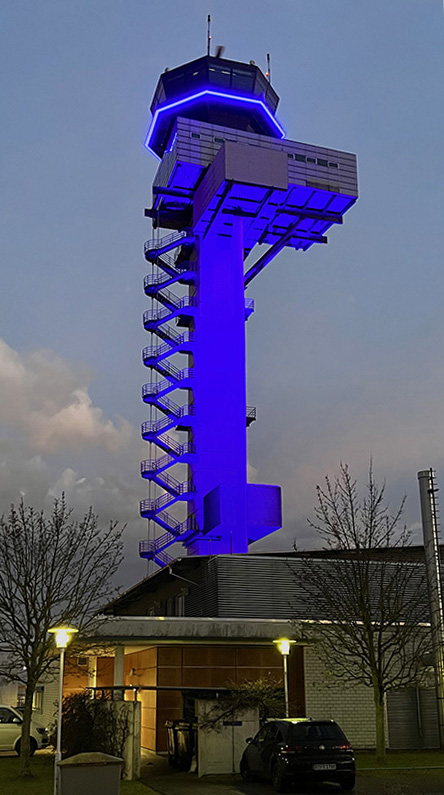
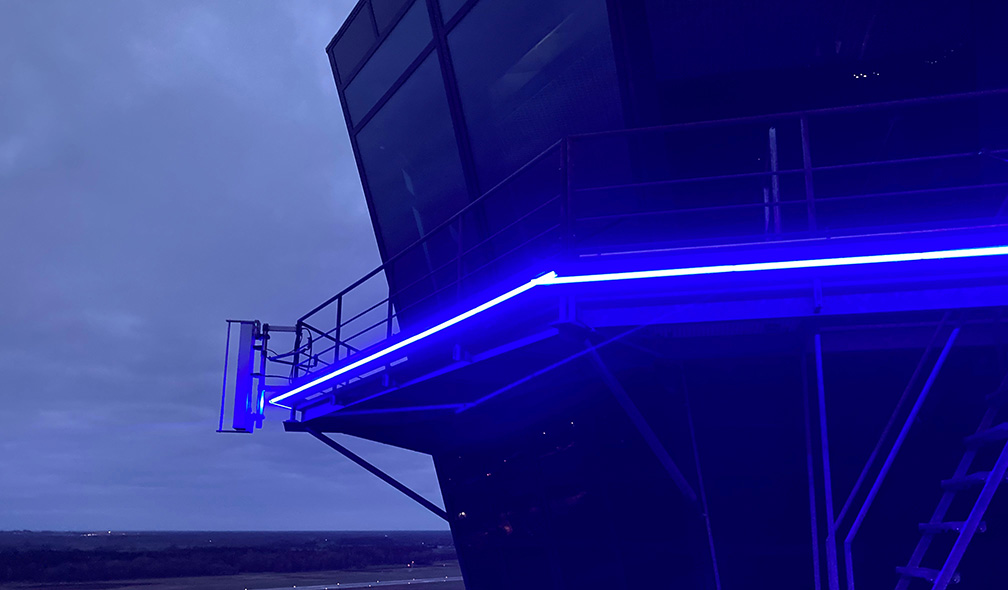
2. The crown of the tower
The control room is comprised of a distinctive octagonal structure. Eight windows overlook an eight-sided balcony. To give emphasis to this signature shaped polygon, direct view linear light fixtures would be the key to outline the structure.
The fixtures would be required in blue only and in custom lengths to match the dimensions of the balcony facets. To avoid glare, the direct fixtures were mounted on the underside of the balcony and customized to aim 15 degrees below the horizon.
The IP Linear Series – Pixel Bar DC was the ideal base product for this application and at only 14 watts per meter it was highly efficient.
PRODUCTS
-
40 x IP linear 1000mm Mini Pixel Bar DC Blue leds only
-
8 x IP linear 1200mm Mini Pixel Bar DC Blue leds only
-
1 x Circular wash Mono 28/72 10 degree Blue leds only with glare shields
-
2 x Circular wash Mono 72/140 5 degree Blue leds only with glare shields
-
1 x IP 6 way DMX splitters
-
2 x 6 way DMX controllers
CONCLUSION
Architectural lighting is a derivative art form – it must capture and enhance the form of the structure, never distort it and this has been achieved.
The essence of the structure has been captured and all of the safety requirements of DFS have been met with a solution that minimises cost and power consumption.
